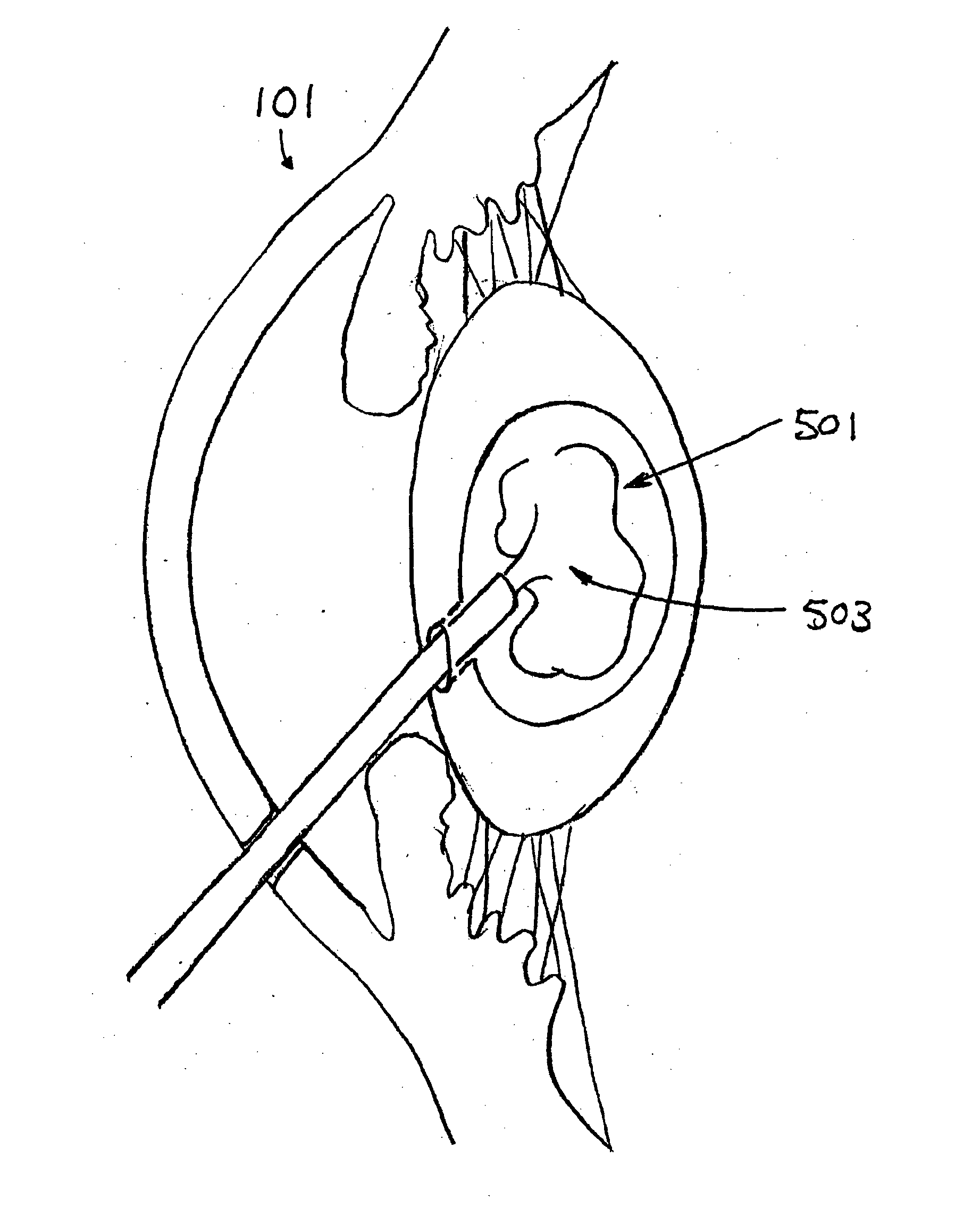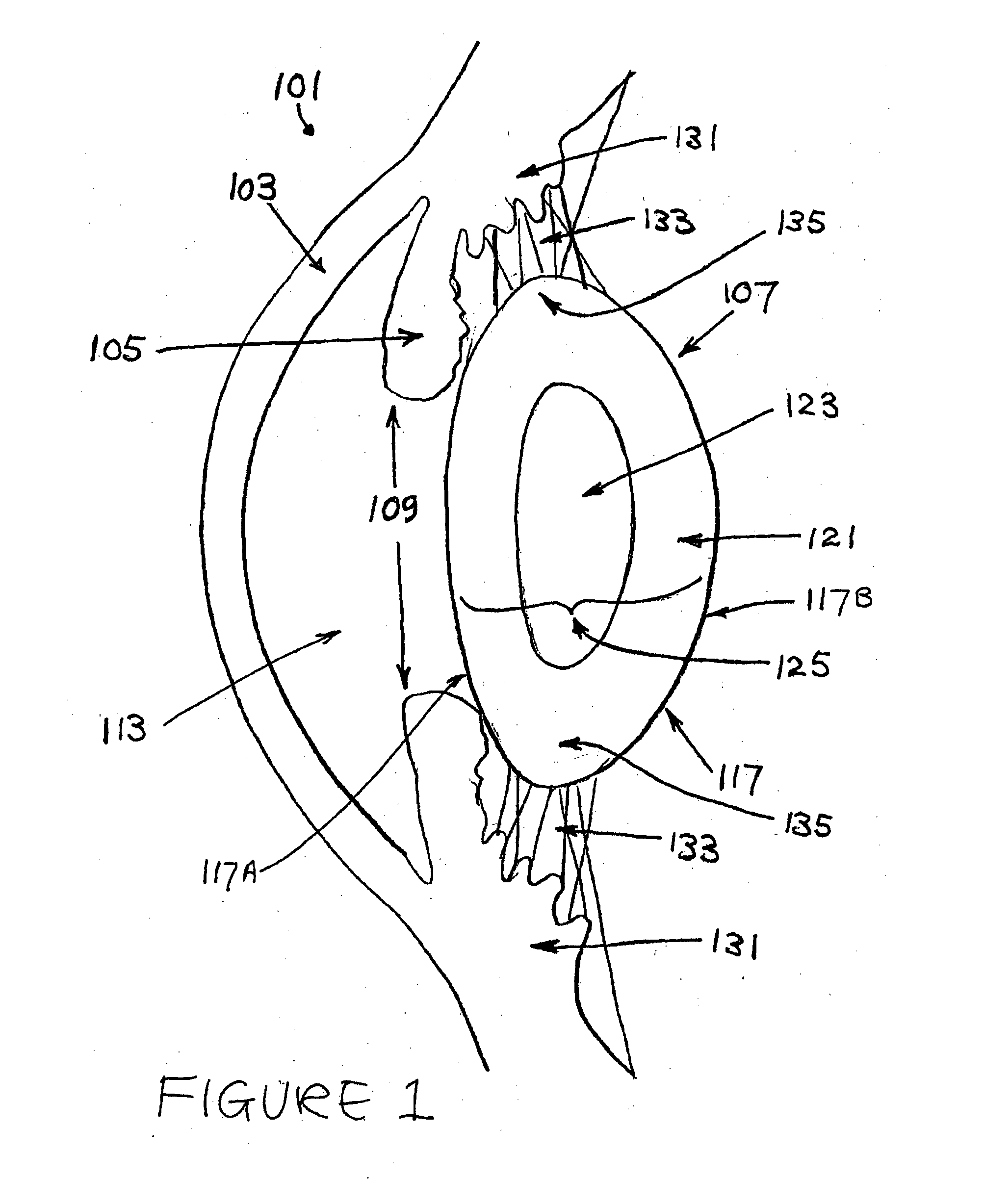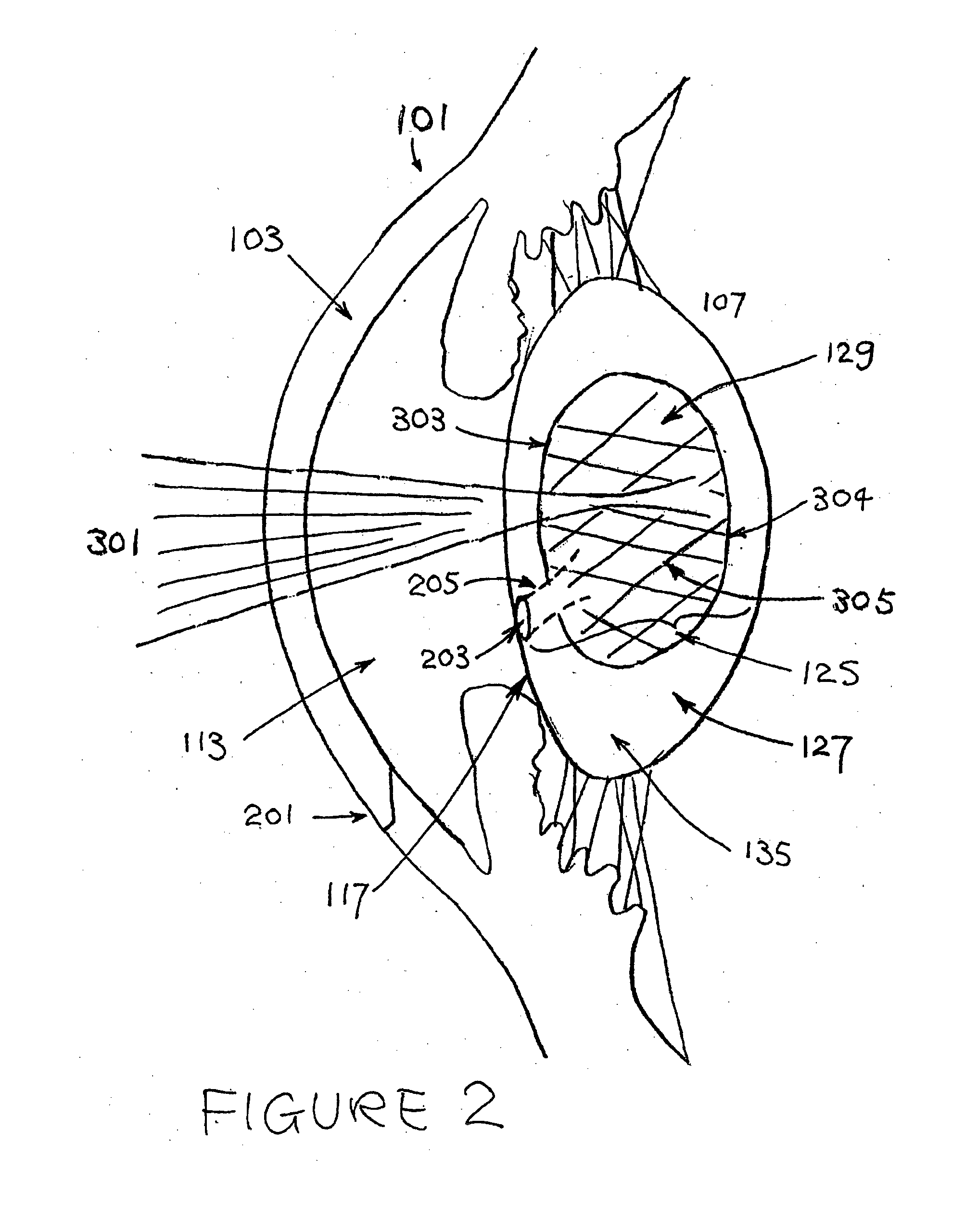Restoration of accommodation by lens refilling
a technology of lens refilling and accommodation, applied in the field of medical procedures, can solve the problems of severe loss of visual quality, substantial risk of capsule rupture, and patient thereafter cannot enjoy the benefits of high quality
- Summary
- Abstract
- Description
- Claims
- Application Information
AI Technical Summary
Benefits of technology
Problems solved by technology
Method used
Image
Examples
example 1
Simultaneous Correction of Refractive Error
[0095]FIG. 8 is an optical layout modelled using an optical ray-tracing program showing a presbyopic eye X102 which can benefit from restoration of accommodation, thereby regaining continuous-focus near vision. FIG. 8 also details the cornea X104, iris / pupil X106, crystalline lens X108 and retina X110 of eye X102. It is seen that this eye suffers from hyperopia as incoming light rays X112 are focused by this eye to focus X114 such that the focus X114 lies behind the retina X110. The amount of hyperopia exhibited by eye X102 is +8 D.
[0096]FIG. 9 is an optical layout modeled using an optical ray-tracing program showing the same eye X102 of FIG. 8 following treatment using the method of the present invention. Thus the crystalline lens X202 has now been refilled by injecting a polymer gel into the void volume X204. The anterior X206 and posterior X208 bounding surfaces of the polymer gel in the refilled void volume X204 is placed such that the ...
example 2
Simultaneous Correction of Refractive Error and Control of Spherical Aberration
[0097]FIG. 10 is an optical layout modelled using an optical ray-tracing program showing a presbyopic eye X302 which can benefit from restoration of accommodation. FIG. 10 also details the cornea X304, iris / pupil X306, crystalline lens X308 and retina X310 of eye X302. It is seen that this eye suffers from myopia as incoming light rays X312 are focused by this eye to focus X314 in front of the retina X310. The amount of myopia exhibited by eye X302 is −5 D.
[0098]In addition to its myopic refractive error, this eye X302 also suffers from about 940 μm of spherical aberration (in this example, described as Seidel spherical aberration S1 as understood by those skilled in the art). FIG. 11 is a highly magnified view of the light rays near the focus X314. It can be seen that the more marginal light rays X402 are focused more anteriorly (towards the left in FIG. 11) while the more central light rays X404 are foc...
PUM
 Login to View More
Login to View More Abstract
Description
Claims
Application Information
 Login to View More
Login to View More - R&D
- Intellectual Property
- Life Sciences
- Materials
- Tech Scout
- Unparalleled Data Quality
- Higher Quality Content
- 60% Fewer Hallucinations
Browse by: Latest US Patents, China's latest patents, Technical Efficacy Thesaurus, Application Domain, Technology Topic, Popular Technical Reports.
© 2025 PatSnap. All rights reserved.Legal|Privacy policy|Modern Slavery Act Transparency Statement|Sitemap|About US| Contact US: help@patsnap.com



